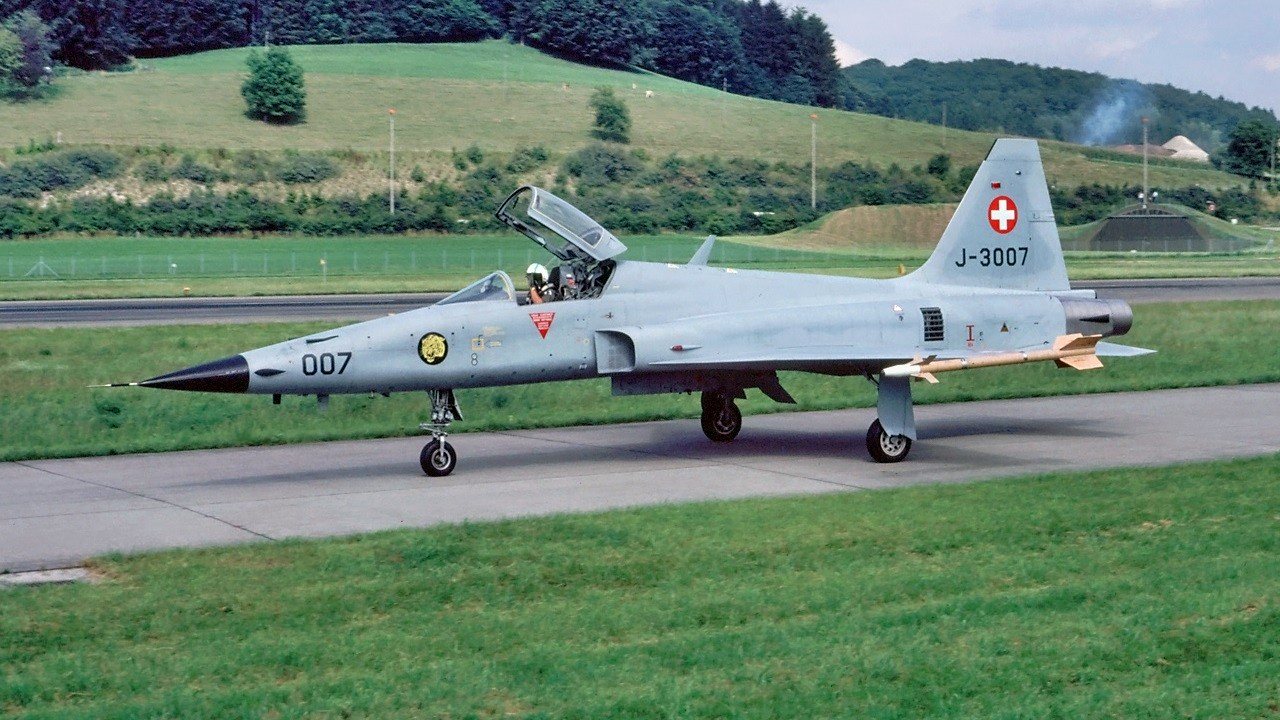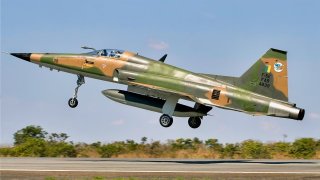MiG-28 In the Original Top Gun Is Really the Old School F-5 Fighter
The F-5 was built as a privately funded project in the late 50s. Supersonic and lightweight, the F-5 is highly aerodynamic, constructed around two General Electric J85 engines.
The F-5 fighter played the role of the MiG-28 in Top Gun - Top Gun: Maverick (2022) has broken countless box office records.
The film, which features Tom Cruise reprising his role as naval aviator Pete “Maverick” Mitchell, is an ode to military airframes, old and new. Most of the aviation footage is shot using actual planes: A P-51 Mustang, an F-35C, plenty of F/A-18s, and one particularly nostalgic, sweep-winged cameo.
Yet, unlike the original Top Gun (1986), the sequel’s adversary aircraft are CGI renderings, not actual aircraft. Clearly based on Russia’s Su-57, the adversarial aircraft are referred to only as “fifth-generation fighters.” The aircraft’s country of origin is never mentioned either, although Russia is the world’s only operator of the Su-57. (Note: I’m not suggesting Russia is the adversary in Top Gun: Maverick. The adversary has breakout nuclear capacity and imported American fighter jets, which each suggest Iran.)
Meet the F-5 Fighter or MiG-28?
The CGI-built Su-57’s represented a departure from the original film’s tactics, in which the adversary aircraft were depicted with actual aircraft. In Top Gun (1986), the “bad guys” fly MiG-28s, capable of a “negative G pushover.” Now, there is no such thing as a MiG-28; the screenwriters made the thing up entirely. To depict the fictional MiG, an American plane was selected, and blacked-out, with an aggressive, foreign-looking paint job. The plane selected was the sleek Northrop F-5.
The F-5 was built as a privately funded project in the late 50s. Supersonic and lightweight, the F-5 is highly aerodynamic, constructed around two General Electric J85 engines. Northrop’s premise for building the F-5 was to create a low-cost, low maintenance fighter with high-performance.
The resultant product was a small, simple plane, best used as an air superiority fighter (yet capable in a ground-attack role, too). The F-5 reached Mach 1.63 speeds and had a range of 554 miles. The nimble aircraft could climb at a rate of 34,500 feet per minute to a maximum service ceiling of 51,800 feet.
The F-5 carries two 20mm M39A2 Revolver cannons, with seven hard points for missiles, rockets, and bombs.
The F-5 proved quite popular on the export market, where Northrop found buyers around the world, from Brazil and Ethiopia, to Switzerland and South Korea.
Despite Northrop closing down the F-5 program in 1987, many countries still use the F-5 today, including Botswana, Honduras, and Taiwan.
No Battles?
In the US, however, the F-5’s country of origin, the plane was rarely used for combat.
The F-5’s US Air Force combat tenure was limited to six months, in 1965, when the F-5 deployed to Vietnam, flying missions over South Vietnam and Laos. Instead of combat, the USAF used the F-5, mostly, in aggressor squadrons, to simulate enemy aircraft (much as it would be used in Top Gun). Perhaps most notably, the F-5’s prototype, the N-156, was the starting point for the design of Northrop’s T-38 Talon – the world’s first, and most highly produced, supersonic trainer aircraft.

To this day, the US Air Force trains its fighter and bomber pilots in the T-38. So, each and every F-22 pilot, or B-2 pilot, or F-15 pilot (and so on) has experience in an F-5 variant.
And each and every fan of Top Gun has seen the F-5 in action, dressed as the fictional MiG-28, whether they knew it or not.
About the Author
Harrison Kass is prolific defense and national security writer with over 1,000 pieces published. An attorney, pilot, guitarist, and minor pro hockey player, he joined the US Air Force as a Pilot Trainee but was medically discharged. Harrison has degrees from Lake Forest College, the University of Oregon, and New York University. He lives in Oregon and regularly listens to Dokken.


